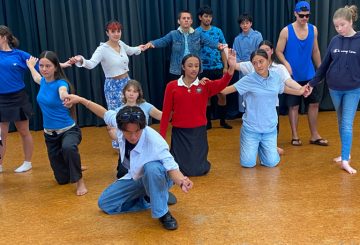1번 주 고속도로와 29번 주 고속도로의 교차로는 뉴질랜드에서 가장 위험한 도로 중 하나로 불립니다.
와이카토와 타우랑가를 연결하는 “위험한” 교차로를 대체할 수 있는 곳이 바로 그것입니다.
티라우 북부의 피아레레 (Piarere) 에 있는 SH1과 SH29의 T-교차로에 2차선 원형 교차로를 건설하려는 계획은 현재 환경 법원의 승인을 받았습니다.
법원은 이전에 오클랜드, 와이카토, 베이 오브 플렌티의 주요 연결통로인 이 교차로가 오후 성수기에 51m 거리를 정기적으로 후진한다는 사실을 들었습니다.
와카 코타히 (Waka Kotahi) 는 “지속적인 충돌 위험”을 이유로 원형 교차로 계획을 세웠고, 케임브리지 상공회의소는 “뉴질랜드 도로망에서 가장 위험한 교차로 중 하나”라고 판결했습니다.
원형 교차로는 이제 환경 법원의 승인과 소음 및 먼지 제한, 통신, 환경 및 교통 관리 계획을 포함하여 준수해야 할 조건 목록을 받았습니다.
와카 코타히는 히누에라-카라피로 A 110kV 송전선로의 자산 문제를 해결하고 박쥐와 도마뱀 관리 계획 등을 따라야 할 것입니다.
원형 교차로 건설에는 18개월이 걸릴 것으로 예상됩니다.
원형 교차로로의 전환으로 “보고된 부상 사고가 87% 감소하고 사망 및 중상 사고가 29% 감소”할 것으로 예상된다고 법원은 밝혔습니다.
결정에 따르면 원형 교차로 부지는 현재 교차로 바로 북서쪽에 있는 Thistlehurst Dairy Limited 농장에 있으며 SH1과 SH29의 일부는 재정렬이 필요할 것입니다.
크레딧: radionz.co.nz




























































